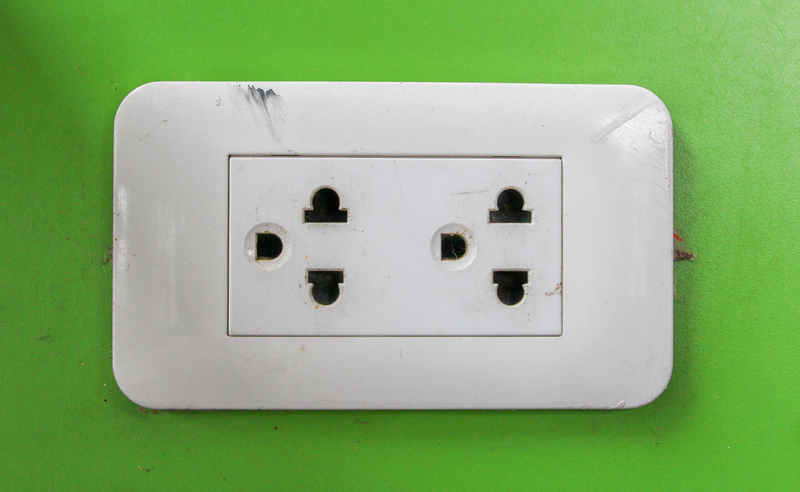Keep Your Bathroom Mold-Free With These Smart Techniques
Posted on 22/06/2025
Keep Your Bathroom Mold-Free With These Smart Techniques
Are you tired of fighting stubborn mold and mildew in your bathroom? You're not alone. Mold finds bathrooms irresistible due to the constant humidity, warm temperatures, and poor ventilation. But did you know you can prevent bathroom mold with a few smart habits and effective techniques? This comprehensive guide will teach you how to keep your bathroom mold-free, tackle mold problems, and maintain a healthy, clean environment for your family.
Why Does Mold Grow in Bathrooms?
Bathrooms create a perfect breeding ground for mold due to their unique environment. Here's why mold thrives in bathrooms:
- Humidity: Daily showers and baths increase moisture and humidity levels.
- Poor Ventilation: Limited airflow prevents moisture from escaping.
- Warm Temperatures: Bathrooms are often warm, which mold loves.
- Organic Matter: Soap scum, hair, and personal care products provide nutrition for mold spores.

Effective Techniques to Keep Bathroom Mold-Free
Preventing mold in your bathroom may seem challenging, but with these proven techniques, you'll have a pristine, mold-free space in no time. The following sections cover both prevention and cleaning strategies for every corner of your bathroom.
1. Improve and Maintain Ventilation
- Install or upgrade your exhaust fan: A good exhaust fan is the single best defense to prevent mold growth in the bathroom. Use it during and after showers and baths for at least 15-20 minutes.
- Open windows and doors: If safe and practical, open windows and doors after using the bathroom to increase air flow and reduce humidity.
- Use a dehumidifier: In bathrooms without windows, a small portable dehumidifier helps maintain lower moisture levels and keeps mold spores at bay.
2. Keep Surfaces Dry and Clean
- Wipe down wet surfaces: After bathing, use a squeegee or towel to remove excess water from tiles, glass doors, and tubs.
- Dry towels and mats: Hang towels and bathmats spread out to dry completely between uses; wash them regularly to prevent mildew build-up.
- Clean up spills immediately: Don't let water pool on countertops or floors. Promptly address leaks or overflows.
3. Choose Mold-Resistant Materials
- Use mildew-resistant paint: Opt for bathroom-specific paints and primers that inhibit mold growth on walls and ceilings.
- Upgrade to mold-resistant caulk and grout: Replace old grout and caulk with new formulas that resist mold and mildew.
- Select non-porous materials: Porcelain, glass, or metal are preferable for bathroom finishes compared to porous natural stone or wood, which retain moisture.
4. Regular Cleaning Routines to Prevent Mold
- Disinfect high-moisture areas: Regularly clean shower walls, grout lines, and corners with mold-killing solutions.
- Scrub grout and caulk: Use a stiff brush dipped in vinegar or hydrogen peroxide to keep these mold-prone areas spotless.
- Clean drains and fixtures: Keep drains free of hair and soap scum, which can trap moisture and encourage mold.
5. Control Moisture Sources
- Fix leaky pipes and faucets: Even small drips can provide enough moisture for mold to thrive.
- Use absorbent mats: Choose fast-drying, washable floor mats to soak up excess water after showers.
- Keep toiletries dry: Store soaps, sponges, and razors in ventilated containers and replace them regularly.
Natural Mold-Prevention Tips for Your Bathroom
Prefer eco-friendly solutions to keep your bathroom mold-free? Try these safe, natural options:
- White vinegar: Spray undiluted vinegar on problem areas; let it sit for an hour, then wipe clean. Vinegar kills up to 82% of mold species.
- Baking soda: Mix with water to form a paste, scrub onto tiles and grout, then rinse. Baking soda naturally disinfects and absorbs odors.
- Tea tree oil: Add a teaspoon to a cup of water, spray on shower walls, and leave to dry. This essential oil is a powerful natural fungicide.
- Lemon juice: The natural acid in lemons helps break down mold and leaves your bathroom smelling fresh.
How to Remove Existing Mold from Your Bathroom
Despite your best efforts, mold can still make an unwelcome appearance. Follow these steps for safe and thorough bathroom mold removal:
- Wear protective gear: Put on gloves, a mask, and goggles to avoid contact with mold spores and cleaning chemicals.
- Ensure proper ventilation: Keep bathroom doors and windows open, and use the exhaust fan when cleaning.
- Remove visible mold: Scrub affected areas with a solution of vinegar, hydrogen peroxide, or a commercial mold remover. For serious infestations, use diluted bleach (never mix bleach with ammonia or vinegar).
- Replace damaged materials: If mold is embedded in caulk, drywall, or tiles, remove and replace the damaged portions.
- Dry the area thoroughly: After cleaning, make sure all surfaces are completely dry to prevent mold from returning.
If you notice mold covering a large area or suspect it's behind walls, contact a professional mold remediation service for safe removal.
Common Mistakes to Avoid in Bathroom Mold Prevention
- Ignoring small leaks: Even small drips or slow leaks can feed hidden mold colonies.
- Skipping fan use: Forgetting to use your exhaust fan during or after showers lets humidity build up.
- Leaving wet items in the bathroom: Damp towels, clothing, and shower curtains encourage mold to grow fast.
- Using the wrong cleaners: Some cleaning products kill surface mold but leave spores untouched. Always use products that target mold specifically.
- Delaying regular cleaning: Waiting too long between cleaning sessions gives mold time to multiply.

When to Call a Professional for Mold Issues
Sometimes, bathroom mold problems are too severe for DIY solutions. Contact a mold removal professional if you notice:
- Mold growth covering more than 10 square feet
- Persistent, musty odors that you can't locate or clean up
- Mold or water damage inside walls, ceilings, or under floors
- Health symptoms such as allergies or asthma aggravated by mold presence
Frequently Asked Questions: Keeping Your Bathroom Mold-Free
- How often should I clean my bathroom to prevent mold?
Clean high-moisture areas, like showers and tubs, at least once a week. Deep clean grout and hidden areas monthly. - Can mold grow behind tiles or walls?
Yes, if water seeps through cracked grout, it can provide a hidden water source for mold. Address leaks and reseal tiles as needed. - Are there paints or finishes that prevent mold in bathrooms?
Use mold-resistant primers and bathroom-specialty paint. They add a protective barrier to deter mold and mildew. - Is mold in the bathroom dangerous?
Some mold types can aggravate allergies, cause respiratory issues, or trigger asthma. Even harmless species can damage your bathroom's structure or surfaces. - What's the best way to ventilate a windowless bathroom?
Install a high-powered exhaust fan and consider a dehumidifier to control moisture levels.
Conclusion: Maintain a Mold-Free Bathroom for Health and Comfort
Achieving a mold-free bathroom is not only possible--it's essential for your household's health and well-being. By following these smart, practical techniques, you'll enjoy a sparkling clean and fresh-smelling bathroom every day. Combining regular maintenance, efficient ventilation, the right materials, and prompt mold treatment will keep unwanted mold and mildew at bay.
Make the commitment to a routine, mold-free bathroom care strategy and reap the benefits for years to come!




